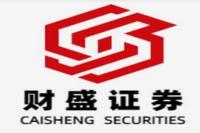Shibor Rates Rise: A Deep Dive into the Implications for China's Financial Landscape
Meta Description: This comprehensive analysis explores the recent rise in Shibor rates, examining its impact on China's banking sector, lending landscape, and overall economic growth. Discover expert insights, data-driven explanations, and actionable information for investors and market participants.
Introduction
The Shibor, or Shanghai Interbank Offered Rate, is a crucial benchmark for interest rates in China's financial system. It serves as the foundation for setting rates on a wide range of financial products, from interbank loans to corporate bonds. A recent upswing in Shibor rates has sent ripples through the financial markets, prompting questions about its implications for the overall economy. While some see it as a sign of tighter monetary policy, others view it as a reflection of market dynamics and the inherent volatility of China's financial landscape.
This in-depth analysis delves into the intricacies of the Shibor, dissecting the recent rise and exploring its potential implications across various sectors. We'll explore the driving forces behind the rate hike, assess its impact on different market segments, and consider what it means for investors navigating China's complex financial landscape.
Understanding the Shibor: A Key to China's Financial System
What is the Shibor?
The Shibor is a daily benchmark interest rate, calculated based on the rates at which banks in Shanghai lend money to each other. It's a complex beast with far-reaching implications for China's financial system. Think of it as the heartbeat of the market, reflecting the overall health and liquidity of the banking sector.
Shibor Rate: A Deeper Dive
The Shibor is a family of rates, each representing a different maturity period. The most common ones include:
- Overnight Shibor: This represents the rate for one-day loans between banks.
- 7-Day Shibor: This reflects the rate for loans with a maturity of seven days.
- 14-Day Shibor: This represents the rate for loans with a maturity of fourteen days.
- 1-Month Shibor: This reflects the rate for loans with a maturity of one month.
- 3-Month Shibor: This represents the rate for loans with a maturity of three months.
These rates are crucial for understanding the cost of borrowing and lending in China's interbank market. They also provide insights into the overall health and liquidity of the Chinese banking system.
Shibor Rate: A Key to China's Financial System
The Shibor plays a pivotal role in setting interest rates for various financial products, including:
- Interbank Loans: Banks use the Shibor as a benchmark for lending to each other.
- Corporate Loans: Companies often use the Shibor as a reference point for negotiating interest rates on loans.
- Bonds: The Shibor influences the pricing of bonds issued by companies and government entities.
- Deposits: Banks use the Shibor to set interest rates on deposits offered to customers.
In essence, the Shibor acts as a central nervous system, transmitting signals throughout China's financial system. It's the foundation for setting interest rates across a wide range of financial instruments, making it a critical indicator for market participants and investors alike.
The Recent Rise in Shibor Rates: A Closer Look
Shibor Rate: A Closer Look
The recent rise in Shibor rates has been a subject of much discussion. While various factors can influence the Shibor, recent changes have been attributed to:
- Tighter Monetary Policy: The People's Bank of China (PBOC) has been implementing a more cautious monetary policy, including raising reserve requirements for banks. This move has reduced the amount of money available for lending, leading to increased demand for loans and, consequently, higher interest rates.
- Market Dynamics: The Shibor is also influenced by market forces, including changes in investor sentiment and overall demand for credit. A surge in corporate borrowing or a shift in investor preferences can drive up Shibor rates.
- Global Factors: Global economic conditions, including interest rate movements in major economies, can also influence the Shibor.
Shibor Rate: A Closer Look
The recent rise in Shibor rates has had a noticeable impact on various sectors:
- Banking Sector: Higher Shibor rates make it more expensive for banks to borrow money, potentially squeezing their profit margins. However, they also benefit from higher lending rates, which can offset some of the pressure.
- Lending Landscape: The increase in Shibor rates has made it more expensive for businesses to borrow money, potentially dampening investment and economic growth. It can also impact the cost of borrowing for individuals.
- Overall Economy: The rise in Shibor rates is a signal of tightening credit conditions, which could potentially slow down economic growth. However, the impact will depend on the magnitude and duration of the rate increase and the overall health of the Chinese economy.
Implications for Investors: Navigating the Changing Landscape
Shibor Rate: Navigating the Changing Landscape
Investors must be aware of the implications of the Shibor rate movements for their portfolios:
- Fixed Income: Investors holding fixed-income securities, such as bonds, may face lower returns as interest rates rise.
- Equities: The impact of Shibor rate changes on equities is more nuanced, as it depends on the company's exposure to borrowing costs and the overall economic environment.
- Currency: Changes in the Shibor can influence the value of the Chinese yuan, potentially impacting investors with exposure to foreign exchange markets.
Shibor Rate: Navigating the Changing Landscape
Here are some strategies for navigating the changing landscape:
- Diversification: Diversifying your portfolio across different asset classes and sectors can help mitigate the impact of fluctuations in the Shibor rate.
- Risk Management: Implement robust risk management strategies to protect your investments from potential losses.
- Stay Informed: Stay updated on economic developments, monetary policy decisions, and market trends.
- Seek Professional Advice: Consider consulting with a financial advisor to develop a tailored investment strategy that aligns with your goals and risk tolerance.
Key Considerations for Investors:
- Economic Outlook: The overall economic outlook of China is crucial for assessing the impact of Shibor rate changes. A strong economy can absorb higher borrowing costs, while a weak economy could be more vulnerable.
- Government Policy: The stance of the PBOC on monetary policy is another critical factor to consider.
- Market Volatility: Shibor rates can be volatile, so investors need to be prepared for fluctuations and adjust their strategies accordingly.
FAQs: Addressing Common Concerns
Shibor Rate: Addressing Common Concerns
Q: What are the potential benefits of rising Shibor rates?
A: While rising Shibor rates can present challenges, they can also have some potential benefits:
- Improved Financial Stability: Higher interest rates can encourage banks to be more prudent in lending and potentially reduce the risk of financial instability.
- Reduced Inflation: Higher interest rates can curb inflation by making it more expensive for businesses and consumers to borrow money.
- Stronger Yuan: Higher interest rates can attract foreign investment, potentially strengthening the yuan's value.
Q: Will the Shibor continue to rise?
A: The future direction of the Shibor is uncertain and depends on several factors, including economic conditions, government policy, and market dynamics. It's impossible to predict with certainty.
Q: How does the Shibor rate compare to other interest rates in China?
A: The Shibor is a benchmark rate used to set interest rates on various financial products, including interbank loans, corporate loans, bonds, and deposits. It provides a reference point for understanding the cost of borrowing and lending in China's interbank market.
Q: What is the relationship between the Shibor rate and the PBOC's monetary policy?
A: The PBOC plays a significant role in influencing the Shibor rate through its monetary policy decisions. The PBOC can use tools such as reserve requirements, interest rate adjustments, and open market operations to affect liquidity in the banking system and, consequently, the Shibor rate.
Q: Is the Shibor rate a reliable indicator of economic health?
A: The Shibor rate is a valuable indicator of the health of China's financial system, but it's not the only indicator to consider. It's essential to analyze other economic data, such as GDP growth, inflation, and employment, to gain a comprehensive understanding of the economic outlook.
Conclusion: A Look Ahead
The recent rise in Shibor rates is a significant development, reflecting changes in China's financial landscape. While it presents both challenges and opportunities, a thorough understanding of the Shibor and its implications is crucial for investors navigating this dynamic market. Stay informed, diversify your portfolio, and consider seeking professional advice to make informed investment decisions. The Shibor continues to evolve, and understanding its nuances is key to navigating the future of China's financial system.



